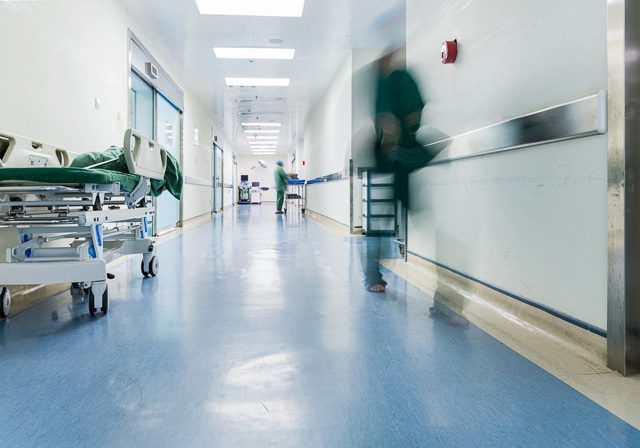SUMMARY
This is AI generated summarization, which may have errors. For context, always refer to the full article.
 This is an open letter from Dr Adrian Rabe, in response to an opinion article written by Fely Sicam entitled “Are resident doctors really doctors?” published on Mindanao Times.
This is an open letter from Dr Adrian Rabe, in response to an opinion article written by Fely Sicam entitled “Are resident doctors really doctors?” published on Mindanao Times.
Dear Mindanao Times and Ms Sicam,
The series of pieces written on government hospitals has brought mixed reactions from the medical community. As is quite characteristic of our Filipino culture, we zoom in on the offensive parts. These things merit some important clarifications, which I hope to provide below. But at the same time, let’s ground these on the broader problems we face.
The first clarification I would like to make is that residents are doctors who have graduated from medicine and are duly licensed by the Professional Regulation Commission to practice. The term “resident” is used in two ways by various government hospitals.
First, it may refer to a doctor who is undergoing residency training in a specific specialty. For example, a doctor undergoing training in surgery is a surgical resident, while a doctor undergoing training in internal medicine is a medical resident.
The second way the term “resident” is used is to refer to physicians who are hired by the hospital to undertake “duty” which usually spans 24 hours or more. They may be stationed at the emergency room, at the outpatient clinics, or the wards (either with pay or for charity).
So to answer the query of Ms Sicam, resident doctors are doctors. But more importantly, resident doctors are humans, too.
In the course of their training or duties, residents take care of many patients. While it is understandable that each patient’s concern is himself or herself alone (and rightly so), these residents are tired, spent, and frequently on their last legs. Under duress, residents-in-training may commit mistakes, may have the last strings of patience snapped, and may falter in their duties. The same is true for nurses, nursing assistants, medical technologists, and the whole range of health care providers in any institution.
We are all humans.
Rest assured that most health professionals do not intend to cause you harm. We do not want to add to your stress, pain, or suffering that you already feel because of your illness.

Rest assured that we, too, suffer the same conditions in our government hospitals. We perspire in the heat of our poorly ventilated emergency rooms, sometimes taking off our coats just to survive. We tolerate the same clogged toilets, the same faucets with low water pressure. We ask patients or their watchers to look for their own stretchers as we attend to the 10 other patients already under our care. It’s hard to justify the death of a patient just because we were looking for a wheelchair.
We are equally indignant at the inequality that we witness everyday, between the facilities given to pay patients compared to charity patients. We are saddened by our broken elevators and worn-out CT scan machines. We are inured to the repeated renovation and rehabilitation our facilities undergo, only to be poorly maintained and destroyed a few years after.
Each death under our watch is like a vicious stab to the heart. It hurts even more when we know that our patient died because they could not afford the necessary medication. It hurts the most when we see patients too far gone in their disease, simply because they had no access to basic medical care.
To Ms Sicam, we are your fellow Filipinos, too. In our collective heart of hearts, we cry out at the injustice we see with our own eyes. We bear the burden of being at the front line, seeing mothers and fathers grieve for their dead children, and children mourning the loss of parents too young to be gone.
And what do we do? We account for each and every one of these patients. Yes, Ms Sicam, we are grilled in morbidity and mortality conferences on what else we could have done, on how we could have changed our patients’ courses. We painstakingly recount each thing we did in the management of our patients. The numbers are staggering, and we have to deal with the emotional, psychological toll of the responsibility placed on our hands. Despite all that, the mortality and morbidity rate in many hospitals is going down all across the nation.
There’s a reason why our dear country is one of the top exporters of quality doctors, nurses and other health care providers globally.
In our own way, the members of the national health community who are overworked and underpaid, are also with you, empathizing with the suffering of your friends and loved ones. We know all too well the power of disease, and the inevitability of death. We too have lost friends and family.
We ask for your forgiveness, in the same way that we ask that you not judge us. We ask that we join hands instead, to help us rebuild our public health care system into one that we can be proud of. Let us end the politics of divisiveness.
I’m hopeful about the future of the Philippines. There will come a day when we won’t fear going to any government hospital or clinic. When that day comes to our country, Ms Sicam and the Mindanao Times, we will look back to that memory of the squalid, humid, and oppressive emergency room and think: How far we’ve come! – Rappler.com
Adrian Rabe, MD, graduated from the UP College of Medicine in 2007 and the UP-Philippine General Hospital Internal Medicine in 2010.
Hospital image from Shutterstock.
Add a comment
How does this make you feel?
There are no comments yet. Add your comment to start the conversation.